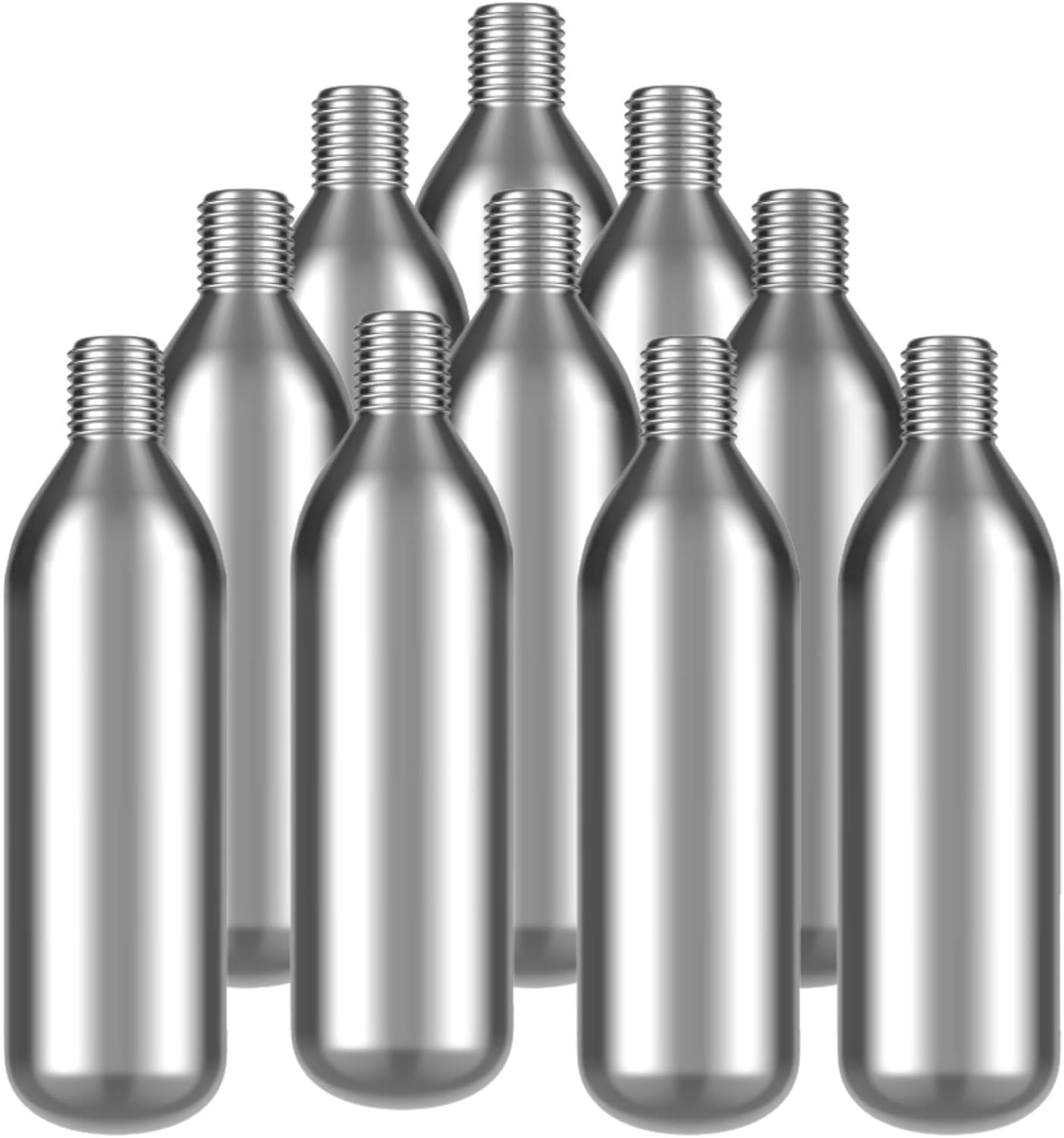How to Open a Wine Bottle Without a Corkscrew (and How to Never Do It Again)
It’s a scene played out in homes, college dorms, and picnic blankets across the U.S. every single weekend. The sound is… silence. It’s the moment you realize the only thing standing between you and that beautiful bottle of Cabernet is a tiny, stubborn cylinder of cork. You have the wine. You have the friends. You do not have a corkscrew. This is the moment “Wine O’Clock” turns into “Wine O’Crap.”
We’ve all been there. That dawning, comedic horror. You start bargaining with the universe. You search the junk drawer for the 10th time, willing an opener to materialize. You look at the bottle, then at your toolbox, and a series of very bad, very “MacGyver” ideas start to form.
Here at Wine Army, we are dedicated to enhancing your wine experience. And while this situation is the opposite of an enhanced experience, getting through it is a rite of passage. So, we’re going to do two things. First, we’re going to give you the real, no-nonsense guide to the “desperation methods.” Second, we’re going to show you how to buy a $10 tool to ensure this never, ever happens to you again. This is your ultimate guide to conquering the cork, with or without the proper tools.
STOP! READ THIS FIRST!
Before you grab a hammer or a shoe, you must accept the risks. We are not joking. Every single method listed below (except the “push-in”) comes with a serious risk of injury.
- You can shatter the bottle, sending glass shards everywhere.
- You can slip with a tool and badly cut your hand.
- You can ruin the wine with cork fragments.
These are last-ditch, “at-your-own-risk” solutions. The bottle is under pressure. The glass is fragile. Please be careful, be sober (for now), and if at any point it feels like it’s going wrong, STOP. A $20 bottle of wine is not worth a trip to the ER.
What’s In This Guide
- The Big Safety Warning (Read It!)
- Part 1: The “Desperation” Methods (The MacGyver Guide)
- Part 2: You Survived. Now, Let’s Never Do That Again.
- Part 3: The $10 “Never-Again” Kit: Your Opener Arsenal
- At-a-Glance: The 5 Openers You Should Own
- 1. The Pro’s Pick: Pulltap’s Waiter’s Corkscrew
- 2. The Easy-Mode: OXO SteeL Winged Corkscrew
- 3. The Effortless: Oster Cordless Electric Opener
- 4. The Old Bottle Savior: The Ah-So Opener
- 5. The High-Tech: Coravin Timeless
- Part 4: You Opened It. What’s Next? (The Full Experience)
- Part 5: Storing, Saving, and Savoring Your Wine
- Frequently Asked Questions (FAQ)
Part 1: The “Desperation” Methods (The MacGyver Guide)
Okay. You’ve accepted the risks. You’re doing this. First, take a deep breath. Second, you MUST remove the foil. You can’t do any of this with the foil on. Use a knife or your thumbnail to cut the foil off cleanly. A proper wine foil cutter is ideal, but we’re in crisis mode, so just get it off.
Method 1: The Screw & Pliers (The Most Reliable “Bad” Method)
This is, by far, the most effective and “safest” of the bad ideas. It’s the one that most closely mimics an actual corkscrew.
- Tools Needed: 1 long, coarse-threaded screw (like a drywall screw), a screwdriver, and a pair of pliers (or a claw hammer).
- Step 1: Take your screw and place it in the exact center of the cork.
- Step 2: Using your screwdriver (or by hand, if you’re strong), drive the screw down into the cork. You want it to go deep, leaving about a half-inch of the screw exposed. The “coarse thread” is key—it gives the screw “bite” into the cork.
- Step 3: Once the screw is secure, take your pliers. Grip the head of the screw firmly.
- Step 4: Pull. Pull straight up. You may need to wiggle it gently back and forth while pulling. If you have a claw hammer, you can slide the claw under the screw head and use the leverage, just like pulling a nail. Be steady! The cork should slowly ease its way out.
Why it works: You’ve created a makeshift “worm” and “handle.” This is the method with the highest success rate and the lowest (but not zero!) risk of bottle-shatter.
Method 2: The Shoe & The Wall (The Classic)
You’ve seen this in a movie. It looks ridiculous. It is ridiculous. But… it can work. This method uses hydraulic pressure (the “water hammer” effect) to force the cork out.
- Tools Needed: One sturdy, flat-soled shoe (a sneaker, not a stiletto) and one very sturdy, solid wall (a brick wall or concrete pillar, not drywall).
- Step 1: Place the bottom of the wine bottle inside the shoe, where your heel would go. The shoe’s sole will act as a padded “hammer.”
- Step 2: Hold the bottle and shoe firmly together in one hand.
- Step 3: Stand facing the solid wall. With firm, consistent, and flat strikes, hit the sole of the shoe against the wall. DO NOT swing for the fences. You are not Thor. You want consistent, “thud-thud-thud” impacts.
- Step 4: Check the bottle after every 3-4 hits. You will see the cork slowly start to ease its way out, pushed by the pressure of the sloshing wine.
- Step 5: Once the cork is about halfway out, STOP. You should be able to pull it the rest of the way by hand. If you keep going, the cork will fly out, followed by a gush of your precious wine.
Why it’s dangerous: If you hit the wall at an angle, or use a flimsy wall, you will shatter the bottle. This is the “high-risk, high-reward” move that makes for a great story, or a terrible one.
Method 3: The “Push-In” (The Last Resort)
This isn’t opening. This is surrender. You are admitting defeat and just pushing the cork into the wine. This is the “I don’t care about cork bits” method.
- Tools Needed: A blunt object, narrower than the cork. The handle of a wooden spoon is ideal. A Sharpie marker also works.
- Step 1: Place the bottle on a very stable, non-slip surface.
- Step 2: Place the blunt end of your tool on the center of the cork.
- Step 3: Push. Push hard. It will take a surprising amount of force to break the initial seal. Be very careful your hand doesn’t slip off the tool and smash into the glass rim.
- Step 4: The cork will eventually give way with a “pop” and fall into the wine.
The Downside: Your wine is now full of cork-floaties. You will need to pour it through a strainer. Also, the cork is now stuck in the bottle, which can make pouring the last glass difficult. This is a bad option for natural wines or older vintages, as the corks can be brittle and will disintegrate.
Method 4: The Key or Serrated Knife (The Twister)
This is a variation of the “screw” method, but with 10x the risk to your hand.
- Tools Needed: A sturdy house key or a small, serrated knife.
- Step 1: Take your key (or the tip of the knife) and push it into the cork at a 45-degree angle.
- Step 2: Wiggle and push until the key/knife is “stuck” deep in the cork.
- Step 3: Now, you’re not pulling. You are twisting and pulling at the same time. You are trying to use the key’s “teeth” as a thread.
- Step 4: Slowly, slowly twist the cork upward.
Why it’s a terrible idea: The key/knife has very little to grip. The odds of it slipping out are high. The odds of you slipping and ramming your hand into the bottle, or the knife through your hand, are even higher. We do not recommend this.
Method 5: The Heat Method (The “DON’T DO THIS” Method)
You will see this on YouTube. Someone takes a blowtorch or a lighter and heats the neck of the bottle, and the cork “magically” pops out. DO NOT DO THIS.
You are applying intense, localized heat to a glass object. This is called “thermal shock.” The bottle will shatter. It will not “pop” the cork. It will explode in your hand. This method is a myth, it is stupidly dangerous, and it will get you hurt. The only heat you should apply to wine is the gentle warmth of a wine chiller sleeve removing the cold from an over-chilled red.
Part 2: You Survived. Now, Let’s Never Do That Again.
Okay. You did it. The bottle is open. Your living room looks like a scene from a disaster movie, you have a small cut on your hand, and your wine has “cork crunchies” in it. But it’s open.
You pour a glass into your best red wine glasses, and you take a sip. You earned this.
Now, let’s talk about the real solution. The “how to open a wine bottle without a corkscrew” problem is not a knowledge problem. It’s a tool problem. The solution is to spend $10 on Amazon and get a tool that makes this a 10-second, elegant process. You need to add a proper opener to your wine cellar essentials. Even if your “cellar” is just a modular wine rack in your kitchen, you are now a person who respects the wine, and yourself, too much to go through that again.
Part 3: The $10 “Never-Again” Kit: Your Opener Arsenal
The world of wine openers is vast, but you only need one or two good ones. We’ve picked the 5 best types of openers—all available on Amazon—that will solve this problem forever. These are the real wine accessories every host needs.
| Opener Type | Best For | Ease of Use | Price |
|---|---|---|---|
| Waiter’s Corkscrew (Pulltap’s) | Everyone. The All-Star. | Medium (Requires practice) | $ |
| Winged Corkscrew (OXO) | Beginners / Home Use | Easy | $$ |
| Electric Opener (Oster) | Effortless / High Volume | Easiest | $$$ |
| Ah-So Opener | Old, Brittle Corks | Hard (Requires practice) | $$ |
| Coravin System | Tasting Rare Wines | Easy (but different) | $$$$$ |
1. The Pro’s Pick: Pulltap’s Waiter’s Corkscrew
Pulltap’s Double-Hinged Waiter’s Corkscrew

This is it. The #1 tool every wine drinker should own. It’s what every sommelier in every U.S. restaurant uses. It’s cheap, it’s indestructible, it’s compact, and it’s perfect. It’s called a “waiter’s friend” for a reason. It has a small serrated blade (a built-in foil cutter), a “worm” (the spiral), and a “boot” (the lever). The “double-hinged” part is key: it gives you a 2-step leverage point, so you pull the cork out cleanly, with zero muscle, and without it making that “pop” sound (a pro-move).
This $10 tool solves everything. It lives in your drawer. You can buy 3. Put one in your kitchen, one in your car’s glove box, and one in your wine bag for picnics. If you buy one thing from this list, it’s this. This is the official “I’m a grown-up” wine tool.
(+) Pros
- All-in-one (foil cutter + opener)
- Double-hinge makes removal effortless
- Extremely durable and compact
- The industry-standard, professional choice
- Very affordable
(-) Cons
- Takes 2-3 bottles to learn the “knack”
2. The Easy-Mode: OXO SteeL Winged Corkscrew
OXO SteeL Winged Corkscrew

You know this one. It’s the “arms-up, arms-down” opener. This is the classic U.S. home-bar tool. It’s fantastic for its simplicity and leverage. You place it on the bottle, twist the top knob until the worm is in, and the “wings” (levers) rise up. Then, you just push the wings down, and the gears do all the work, pulling the cork straight up. This OXO model is a bestseller because it’s sturdy, has a non-slip grip, and just works. It’s a bit bulkier than a waiter’s key, but its intuitive design is a huge plus for the casual wine drinker.
(+) Pros
- Very intuitive and easy to use
- Requires minimal strength
- Sturdy, stable platform
- Ergonomic, non-slip grips
(-) Cons
- Bulky, does not fit in a pocket
- Cheaper models can break easily (this one is solid)
- No built-in foil cutter
3. The Effortless: Oster Cordless Electric Wine Opener
Oster Cordless Electric Wine Opener

This is the one. The best electric wine opener for the U.S. consumer who values convenience above all. It’s the #1 bestseller on Amazon for a reason. You put it on top of the bottle, you press the “down” button. You wait 5 seconds. You press the “up” button. The cork is out. That’s it. It’s a flawless, magical, and effortless experience. It comes with a charging base and a little foil cutter. For a party, where you might be opening 5-6 bottles, this is an absolute lifesaver. It also makes a phenomenal wine gift.
(+) Pros
- Absolutely zero effort required
- Opens a bottle in seconds
- Looks sleek and high-tech on a counter
- Rechargeable base is convenient
- Perfect for anyone with grip issues or arthritis
(-) Cons
- Requires charging
- Bulky, needs a “home base”
- Can struggle with very old/brittle corks
4. The Old Bottle Savior: The Ah-So Opener
“Ah-So” Two-Prong Wine Opener

This is a “pro-level” tool. It’s also called a “Butler’s Friend.” You know all those methods you just read about that destroy the cork? This is the opposite. An Ah-So is designed to open very old, fragile bottles without touching the cork with a spiral. It has two prongs. You “rock” them down, one by one, between the cork and the bottle. Once it’s all the way in, you twist and pull, and the prongs “grip” the cork and pull the whole thing out intact. It takes practice, but if you’re the person opening a 20-year-old wine, this is the only tool that won’t turn that cork into sawdust.
(+) Pros
- The best tool for old, fragile, or brittle corks
- Pulls the cork out completely intact
- Can also be used to re-insert a cork
(-) Cons
- Requires a lot of practice
- Can accidentally push the cork in if used incorrectly
- Not for everyday use
5. The High-Tech: Coravin Timeless Preservation System
Coravin Timeless Six+ Wine Preservation System

This is the ultimate answer to the Coravin vs. Vacu Vin debate. This is not an “opener.” It’s a “preservation system.” It doesn’t open the bottle at all. The Coravin pushes a medical-grade needle through the cork, pressurizes the bottle with harmless argon gas, and pours the wine out of the needle. You then pull the needle out, and the natural cork reseals itself. The result? You can pour one glass of a $500 bottle, and put it back in your wine cooler for years. It’s the ultimate tool for the serious U.S. collector who wants to “taste” their collection without opening it.
(+) Pros
- Lets you drink any wine by the glass
- Preserves wine for months, even years
- The ultimate tool for collectors
- A game-changer for tasting rare bottles
(-) Cons
- Extremely expensive (system and gas refills)
- Does not work on screw caps (without an adapter)
- Not an “opener” for a party
Part 4: You Opened It. What’s Next? (The Full Experience)
Opening the bottle is just the first step in a long, beautiful journey. Now that you’ve (safely) breached the cork, you’ve entered the world of the true wine enthusiast. This is where the whole ritual begins.
The Perfect Pour Ritual
You’ve got the open bottle. Now, let’s make it perfect.
- Let it Breathe: That red wine has been “asleep” in the bottle. You need to wake it up. This is the great wine aerator vs. decanter debate. A young, “tight” red will be transformed by pouring it into a decanter. In a hurry? A simple electric aerator can do the job in seconds.
- Check the Temp: Was that white wine sitting out? Was that red too warm? A lukewarm white is a tragedy. A wine chiller sleeve is a freezer-based jacket that gives you a perfect 45°F chill in 10 minutes. A countertop electric wine chiller can hold it there all night.
- Serve with Style: Don’t just cluster bottles on the counter. A wine serving tray makes you look like a pro. And please, please don’t drink that great wine from a coffee mug. A set of proper red wine glasses will literally make the wine taste better by concentrating the aroma.
- Pair it Perfectly: Wine’s best friend is food. Knowing the basics of how to pair wine with food will elevate your entire meal from “dinner” to “an experience.”
Part 5: Storing, Saving, and Savoring Your Wine
Your journey into the wine terminology guide has begun. You’ve got openers, you’ve got glasses, you’ve got decanters. But what about the next bottle? And what if you didn’t finish this one?
Saving the Leftovers: You can’t just shove the cork back in. Well, you can, but it’s a bad seal. A set of simple, effective wine stoppers is a cheap, essential buy. They create an airtight seal that keeps your wine fresh for 2-3 days.
Building Your Collection: Now you’re hooked. You’re getting a wine subscription box and trying new wine varietals, from affordable bottles to interesting organic wines. Where do you keep them?
- Storage 101: You need to learn how to store wine at home. The #1 rule: keep it cool, dark, and sideways.
- No Cellar? No Problem: You don’t need a custom cellar. Our guide on how to store wine without a fridge is a lifesaver.
- The Right Rack: A modular wine rack is a great, eco-friendly wine storage solution that grows with your collection.
Frequently Asked Questions (FAQ)
Q: I pushed the cork in. How do I get it out?
A: You don’t. That’s its new home. You’ve made a “ship in a bottle,” but with a cork. Just accept it, and be careful when you’re pouring the last glass. The only way to get it out is to… well, let’s just say it’s not worth it.
Q: I used the “screw” method, but my cork just crumbled. What did I do wrong?
A: You did nothing wrong! This means the cork was old, dry, or brittle. This is common in older bottles or bottles that were stored upright (see? Storage matters!). The “worm” of the corkscrew just tore it apart. This is a case where only an “Ah-So” opener would have saved it. Your best bet now is to strain the wine through a fine-mesh sieve into a decanter.
Q: Is the “shoe” method real? It looks like a prank.
A: It is 100% real and based on real physics (Pascal’s Law!). It is also, 100%, a terrible idea. The risk of failure (a shattered bottle) is just too high. It’s a “party trick” that can end in a trip to the hospital. A $10 waiter’s key is a much better “party trick.”
Q: I’m buying my first opener. Which one?
A: Get the Pulltap’s Waiter’s Corkscrew. It’s cheap, it’s indestructible, it has a foil cutter, and it will make you look (and feel) like a pro. Learn to use it, and you’ll be set for life.
The Final Word: The $10 Solution
The best way to open a wine bottle without a corkscrew is to… never have to. The panic, the danger, the shards of cork—it’s all avoidable. For the price of a single mediocre glass of wine at a bar, you can buy a tool that will last you for 10,000 bottles. It’s the simplest, most effective “upgrade” to your entire wine life.
So, laugh about that time you used a shoe. Tell the story at parties. And as you’re telling it, reach into your pocket, pull out your trusty waiter’s key, and open the next bottle with the smooth, satisfying snick of a pro. Your friends, and your wine, will thank you.

























